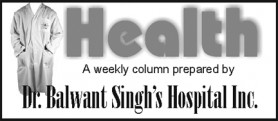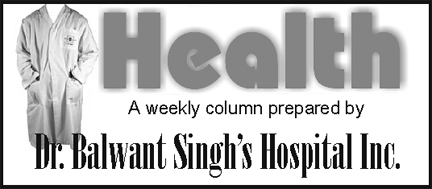By Dr Kiran Koora MDS (Paedodontist)
Dental health for children should not be ignored… it should be planned. Our goal is to have children become independently healthy, so they may grow up disease free, with no teeth injuries or fillings and with the necessary knowledge to keep their teeth and gums healthy for life. Paediatric dentistry is the branch of dentistry concerned with providing comprehensive dental care and treatment for the child patient, making it the most satisfying and rewarding type of dentistry. Getting your child into a good oral health routine at a young age will help ensure that they continue to have good oral health when they are older. Treating a young child is the most challenging speciality where most of the general dentists do not dare to venture. The main reasons for this could be the strain involved in the management of children with pain and anxiety issues and mastering the vast speciality that comprises paediatric dentistry.

The symptoms of dental trauma depend on the type of injury. Soft tissue injuries such as cuts, burns or bruises to the lips, inner cheeks or tongue can result in pain, redness, swelling and possible bleeding. Broken teeth result in sharp edges that can potentially cut the soft tissue. Depending on the type of fracture, broken teeth may also result in toothache. A tooth that has been knocked out or avulsed will leave a swollen, painful and bloody socket. A broken jawbone can lead to malocclusion (bad bite), jaw pain and limited movement in the temporo-mandibular joint (jaw joint).
A dentist can easily recognize signs of trauma in the mouth by taking x-rays to determine the extent of the damage. Sensitivity of the oral tissues means that mouth trauma tends to be painful, so prompt treatment of trauma is recommended. The type of treatment depends on the type of injury.
Soft tissue injuries
The presence of foreign material in lacerations of the lip and buccal mucosa, such as tooth fragments should be identified and removed at the initial appointment; this eliminates chronic infection. Reduce swelling with cold compresses which control bleeding by putting pressure with a clean gauze. Stitches can help deep punctures or lacerations.
Broken teeth
Immediately rinse with warm water to remove dirt from the injured tooth and surrounding gums. Cover the area with a cold compress to reduce swelling and remove any pieces of the broken tooth. If an entire tooth has been knocked out hold it by the crown (outer area), not the root. Keep the tooth moist. Place it in milk, coconut water or contact lens fluid. See a dentist as soon as possible, preferably, within thirty minutes. The sooner your dentist treats the problem, the better the chances of saving the tooth.
If the pulp or inner core of a chipped tooth is still intact the dentist can smooth out the chipped area and replace the missing section with a cosmetic resin filling.
If you have saved the missing piece of tooth it may be possible to bond it back into place with a cosmetic resin filling.
If the pulp is intact but a large part of the outer tooth structure is missing, the dentist can protect the remaining parts of the tooth by covering it with a gold or porcelain crown. If the pulp has been damaged the tooth may need root canal treatment followed by a protective crown. Dentists try to save teeth whenever possible; however if the tooth structure is damaged beyond repair it may be necessary to extract the tooth and consider other options like dental implants, fixed bridges and removable dentures.
If a baby tooth is knocked out, your dentist will more than likely, not try to save it as the body will often reject it. The dentist will instead treat the socket as a soft tissue injury. He or she may recommend using a space maintainer (a device to prevent the remaining teeth from shifting into the gap left by the missing one potentially causing crowding when the permanent teeth begin to erupt.
Broken jaws
See your dentist immediately. He or she must take x-rays to determine the extent of the damage and set it back to its proper position using wires to hold the jaw in its place.
Healing can take up to 4-6 weeks or more, depending on the age of the patient and the degree of the injury. With immediate care, most dental trauma will eventually result in full recovery.
Dental trauma is highly preventable
To reduce the risks do the following:
Wear seat belts in cars and ensure young children are secured in car seats. Eliminate tripping hazards from your home.
Wear mouth guards during sports, especially contact sports or any activity involving speed, potential falls and potential contact with a hard surface or piece of equipment (such as bicycling).






